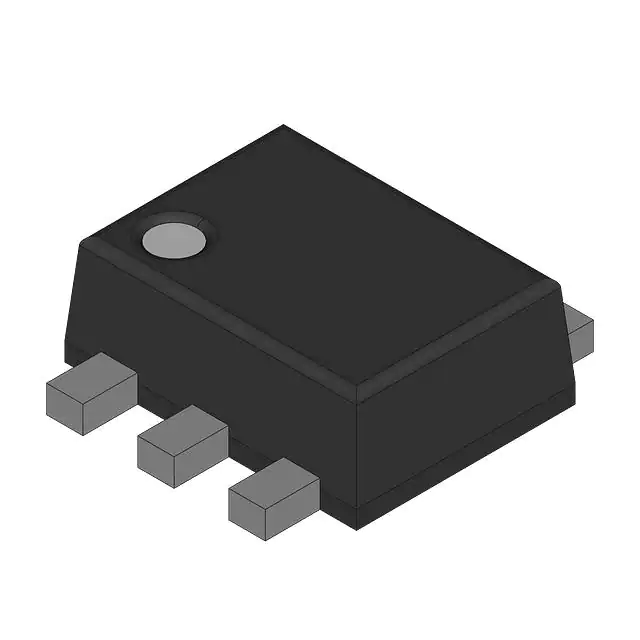The TLK10002CTR device is a dual-channel, multi-rate transceiver intended for use inhigh-speed bidirectional point-to-point data transmission systems. It has special support for thewireless base station Remote Radio Head (RRH) application, but may also be used in other high-speedapplications. It supports all the CPRI and OBSAI rates from 1.2288 Gbps to 9.8304 Gbps.
The TLK10002CTR performs 1:1, 2:1 and 4:1 serialization of the 8B/10B encoded data streamspresented on its low-speed (LS) side data inputs. The serialized 8B/10B encoded data is presentedon the high-speed (HS) side outputs. Likewise, the TLK10002CTR performs 1:1, 1:2 and 1:4deserialization of 8B/10B encoded data streams presented on its high-speed side data inputs. Thedeserialized 8B/10B encoded data is presented on the low-speed side outputs. Depending on theserialization or deserialization ratio, the low-speed side data rate can range from 0.5 Gbps to 5Gbps and the high-speed side data rate can range from 1 Gbps to 10 Gbps. Both low-speed andhigh-speed side data inputs and outputs are of differential current mode logic (CML) type withintegrated termination resistors. In the 1:1 mode, the input can be raw (non-8B/10B encoded) data,allowing for transmission of PRBS data through the device.
The TLK10002CTR performs data serialization or deserialization and clock extraction as aphysical layer interface device. Flexible clocking schemes are provided to support variousoperations. They include the support for clocking with an externally-jitter-cleaned clock recoveredfrom the high-speed side.
The TLK10002CTR provides two low-speed side and two high-speed side loopback modes forself-test and system diagnostic purposes.
The TLK10002CTR has built-in pattern generation and verification to help in system tests.The low speed side supports generation and verification of PRBS 27-1,223-1, and 231-1 patterns. In addition tothose PRBS patterns, the high-speed side supports High, Low, Mixed, and CRPAT long and shortpattern generation and verification.
The TLK10002CTR has an integrated loss-of-signal (LOS) detection function on both high-speedand low-speed sides. LOS is asserted in conditions where the input differential voltage swing isless than the LOS assert threshold. The input differential voltage swing must exceed the de-assertthreshold for the LOS condition to be cleared.
Lane alignment for each channel is achieved through a proprietary lane alignment schemeimplemented on the low-speed side interface. The interfaced upstream link partner device needs toimplement the lane alignment scheme for the correct link operation. Normal link operation resumesonly after lane alignment is achieved.
The two TLK10002CTR channels are fully independent. They can be operated with differentreference clocks, at different data rates, and with different serialization or deserializationratios.
The low-speed side of the TLK10002CTR is ideal for interfacing with an FPGA or ASIC locatedon the same local physical system. The high-speed side is ideal for interfacing with remote systemsthrough an optical fiber, an electrical cable, or a backplane interface. The TLK10002CTR supportsoperation with SFP and SFP+ optical modules.
Feature
- Dual-Channel, 10-Gbps, Multi-Rate Transceiver
- Supports All CPRI and OBSAI Data Rates From 1 Gbps to 10 Gbps
- Integrated Latency Measurement Function, Accuracy up to 814ps
- Supports SERDES Operation With up to 10-Gbps Data Rate on the High-SpeedSide and up to 5G bps on the Low-Speed Side
- Differential CML I/Os on Both High-Speed and Low-SpeedSides
- Shared or Independent Reference Clock PerChannel
- Loopback Capability on Both High-Speed and Low-Speed Sides, OBSAICompliant
- Supports Data Retime Operation
- Supports PRBS 27-1, 223-1 and231-1 and High-Frequency, Low-Frequency, Mixed-Frequency, and CRPAT Longand Short Pattern Generation and Verification
- Two Power Supplies: 1-V Core, and1.5-V or 1.8-V I/O
- Transmit De-Emphasis and Receive Adaptive Equalization toAllow Extended Backplane or Cable Reach on Both High-Speed and Low-SpeedSides
- Programmable Transmit Output Swing on Both High-Speed and Low-SpeedSides.
- Minimum Receiver Differential Input Threshold of 100mVpp
- Loss-of-Signal (LOS)Detection
- Interface to Backplanes, Passive and Active Copper Cables, orSFP/SFP+ Optical Modules
- Hot Plug Protection
- JTAG; IEEE 1149.1 Test Interface
- MDIO;IEEE 802.3 Clause-22 Support
- 65-nm Advanced CMOSTechnology
- Industrial Ambient Operating Temperature (–40°C to 85°C) at FullRate
- Power Consumption: 1.6 W Typical
- DevicePackage: 13-mm × 13-mm, 144-pin PBGA, 1-mm Ball-Pitch
All trademarks are the property of their respective owners.










